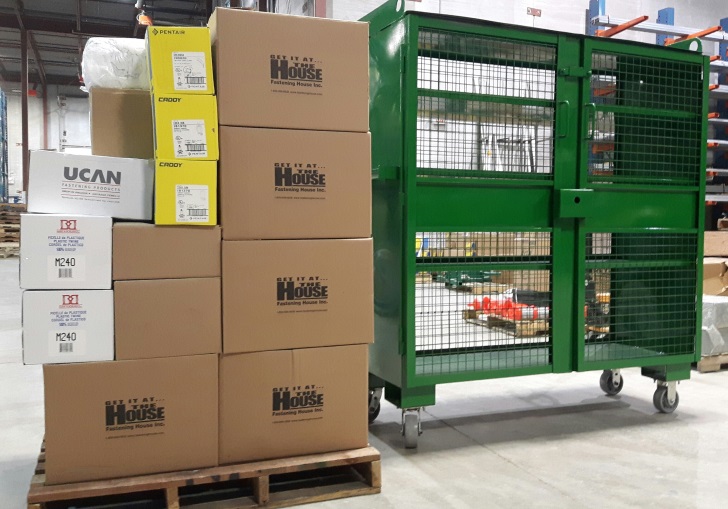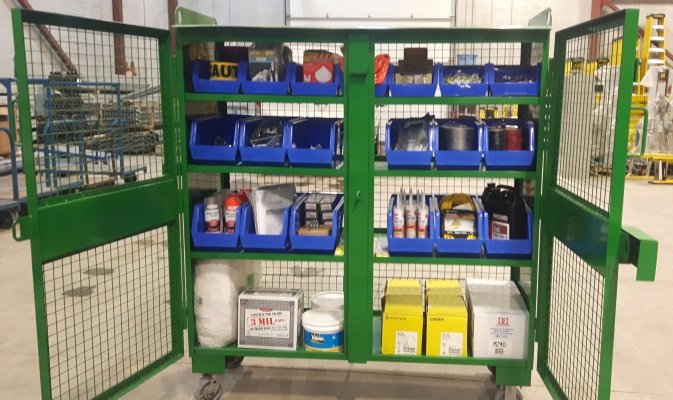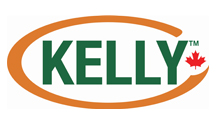Common Material Management Challenges (and How You Can Solve Them)
July 14, 2017, 7:30 PM /
 The right material management solution can boost labour productivity by anywhere from 4% to 12%, which is why properly managing materials is so critical on every jobsite regardless of size or location. If supplies aren’t handled effectively, that can have ripple effects down the line, delaying subsequent tasks and increasing costs.
The right material management solution can boost labour productivity by anywhere from 4% to 12%, which is why properly managing materials is so critical on every jobsite regardless of size or location. If supplies aren’t handled effectively, that can have ripple effects down the line, delaying subsequent tasks and increasing costs.
We’ve identified some common material management problems contractors can face at each stage—from procuring the bid through to handling supplies after they’re delivered—and explored what actions you can take to resolve them.
Stage 1: Procuring a Bid
Problem
It isn’t uncommon for the scope of the project to change as it’s coming together, which can affect the bidding and materials acquisition processes.
Let’s say, for example, that the property owner wants to substitute higher quality materials, but doesn’t want to extend the overall budget. The general contractor or project manager will need to work with on-site tradespeople (like mechanical or electrical contractors) to determine what, how, and where accommodations can or can’t be made.
Solution
The answer here is maintaining communication and involvement.
Don’t, for example, wait until after the details have already been settled to bring your electrical contractor onto the jobsite. They might be able to provide advice on which materials and methods would be most suitable for the task at hand, information that can be factored into the bid.
Stage 2: Purchasing Supplies
Problem
Most jobsites will handle two types of supplies:
- Miscellaneous commodities, which include off-the-shelf items like fittings, fasteners, ties, cables, straps, and conduits.
- Major materials are jobsite-specific (and sometimes custom designed) pieces like fixtures, alarm systems, and switchgears.
What five essential material management tips can help you increase on-site productivity? Read our blog to find out!
Solution
It’s important to establish a consistent process from the beginning. On some sites, it will make the most sense for sub-contractors and tradespeople to order their own major supplies, while general contractors take care of the day-to-day and miscellaneous requirements. In other cases, project managers will want to be responsible for purchasing everything the jobsite will need.
Stage 3: Ordering and Receiving Materials
Problem
After you’ve figured out what you need and who will supply it, the next step is to make sure it gets to the jobsite (or storage areas) without issue or hassle.
This is where things might get complicated:
- You need to receive supplies at a certain time, but there’s a miscommunication and that doesn’t happen.
- They need to be delivered to a specific location (central warehouse vs. jobsite), and they’re sent to the wrong spot.
- Incorrect quantities come in, which means you either don’t have sufficient storage space or don’t have everything you need to complete the necessary tasks.
These types of hiccups can lead to delays, unexpected costs, and labour shortfalls or overages (especially if you need to use your own crews to relocate materials).
Solution
There are two things you can do to remedy potential headaches like these.
First, account for all the relevant factors for your job:
- Do your release forms specify all the necessary material types?
- What quantities do you need?
- When and where does everything need to be delivered?
A good rule of thumb is to purchase roughly 80% of the supplies you’ll need. That will prevent surpluses, and you can buy the remainder when you’re closer to completion.
Second, you need to work with reliable suppliers. Sometimes general contractors get hung up on the price of the product, compromising on service to keep some cash in their project’s pocket.
But remember, saving a few cents on a fastener now isn’t going to be worth it if you then need to involve your own team in moving, sorting, or organizing materials after they’re delivered. Working with a partner who can provide superior service and keep your jobsite organized and stocked will help you maximize productivity and reduce labour costs.
Stage 4: On-site Storage and Handling
Problem
Once materials have arrived on site, you can still run into challenges:
- Tracking plays a crucial role in ensuring the right materials were delivered and are all present.
- Damage can happen anywhere along the supply chain—while something is in transit, as it’s transported to storage, or as it’s being taken to the installation point—which is why you need to be vigilant.
- Rehandling is sometimes expected (like if a sub-contractor is keeping major supplies at their warehouse or in their trailer), though often this crops up as an unexpected issue.
These complications can cause work-related backlogs and unanticipated costs.
Solution
 When it comes to on-site storage, there are a few basic things you need to do:
When it comes to on-site storage, there are a few basic things you need to do:
- Make sure your storage solution suits your job including any physical limitations, inventory schedules, and environmental factors.
- Reduce how far people have to go to get materials. You don’t want your crews spending too much time walking back and forth whenever they need to change their tool or grab an accessory.
- Keep storage units locked, especially when they’re not in use. This will help you control access.
Every jobsite is going to have different needs. Larger projects might benefit from having a bigger space (whether a permanent fixture like a warehouse or temporary one like a crate) for central storage, plus compact units distributed around the site to hold area-specific goods. Smaller settings might only need one or two storage units.
Material Management Made Easy with Kelly Kabinet
 Kelly Kabinet, a managed service available exclusively from Fastening House, ensures your teams have everything they need where and when they need it. It’s free and unique to you, with inventory lists and re-stocking schedules customized to suit your needs.
Kelly Kabinet, a managed service available exclusively from Fastening House, ensures your teams have everything they need where and when they need it. It’s free and unique to you, with inventory lists and re-stocking schedules customized to suit your needs.
Take advantage of benefits like:
- Enhanced Control: Securing and locking your Kelly Kabinet lets you physically supervise your inventory. Any restocking orders will need to be approved by you, which ensures complete transparency,
- Streamlined Operations: Your Kelly Kabinet rep is there for more than just the Kelly Kabinet. If there’s a non-Kelly Kabinet item you need, just ask! If they can’t get it themselves, they’ll work with our warehouse and delivery staff to arrange it.
- Flexible Options: Our storage solutions include standard stationary cabinets (6’H x 3’W x 15”), rolling cabinets (60”W x 60”H x 24”), and full-size sea containers.
- Increased Productivity: Think of us as a member of your team. We’re there to produce orders, fill them, deliver them, and put everything away—keeping your project on track, cutting down on workloads for your clerical staff, and cleaning up when the job is finished.
Ultimately, you need to design and implement storage and material handling strategies that will work for your jobsite, boost productivity, and produce results.
With over 45 years of experience, we know that every job is different. Contact us today to get the Kelly Kabinet’s Inventory Management System’s flexible, secure, and cost-effective solutions working for you!
Read more from Fastening House:
- Are You Ready to Lower Your Installation Costs? Introducing Telescoping Strut Support Brackets and Replacements – CADDY’s Innovative Alternative for Trusted Support
- How to Find the Right Abrasives for Your Metalworking Application
- 3-Step Guide to Choosing the Right Drill
- Fastening House Acquires Sabre Industrial Supplies Limited - February 22, 2023
- Fastening House Supports Skilled Trades Expansion at Durham College - April 26, 2022
- Fastening House Continues Its Legacy - April 4, 2022

